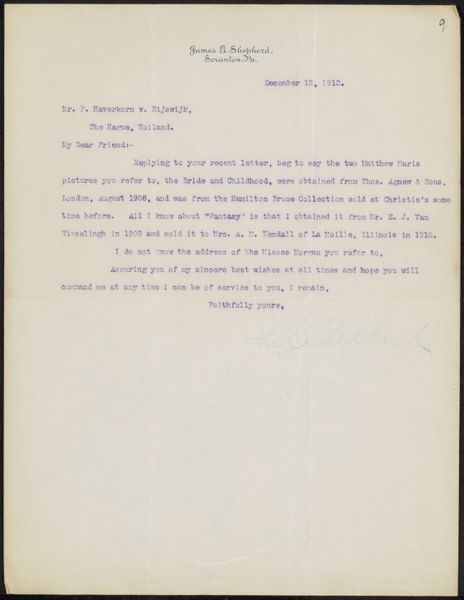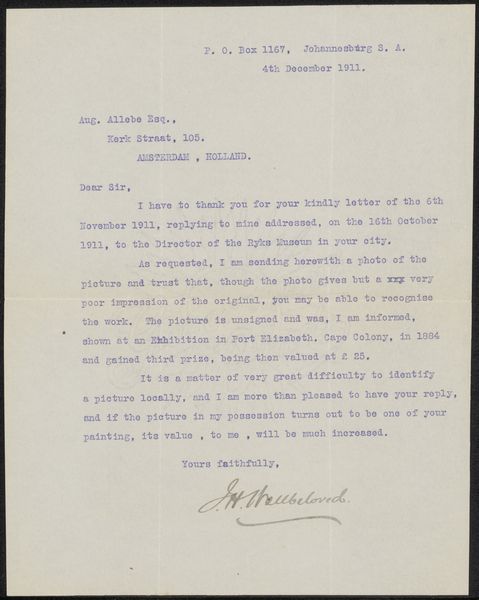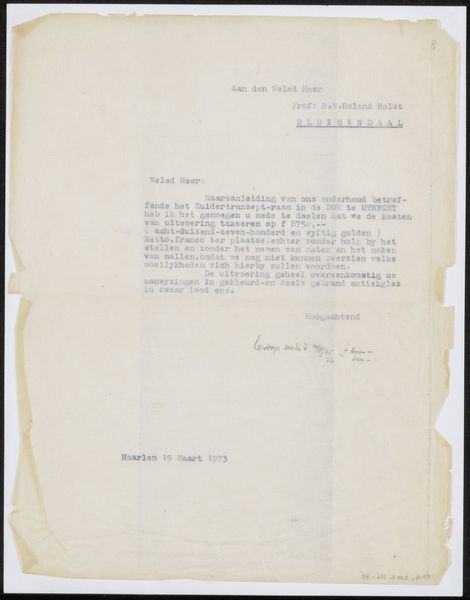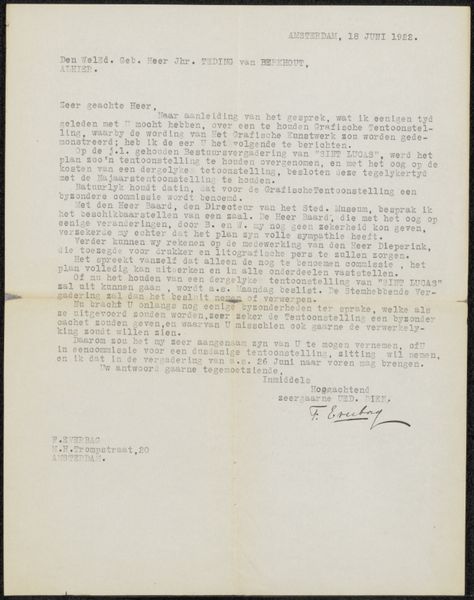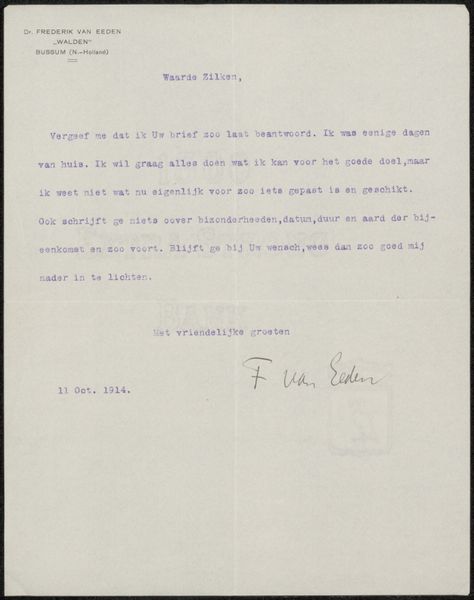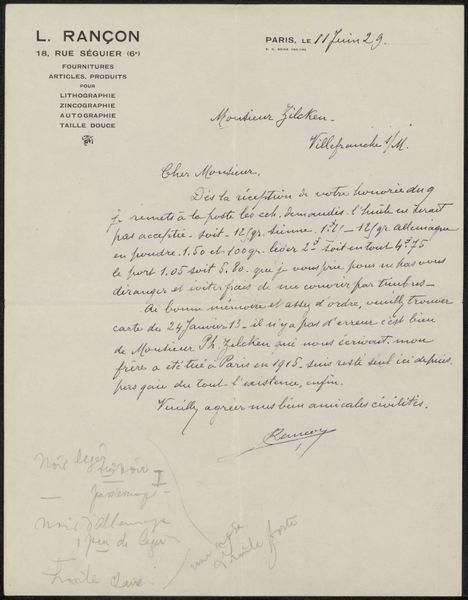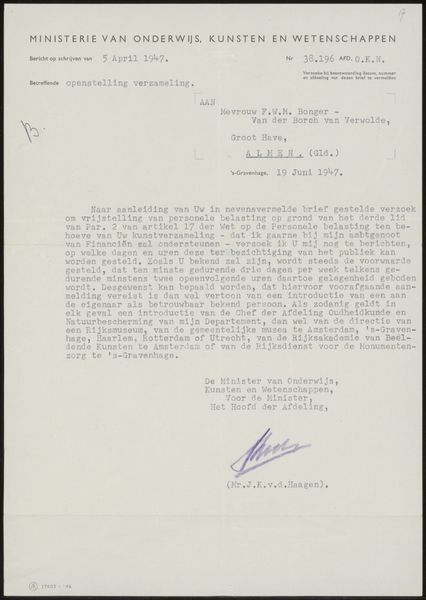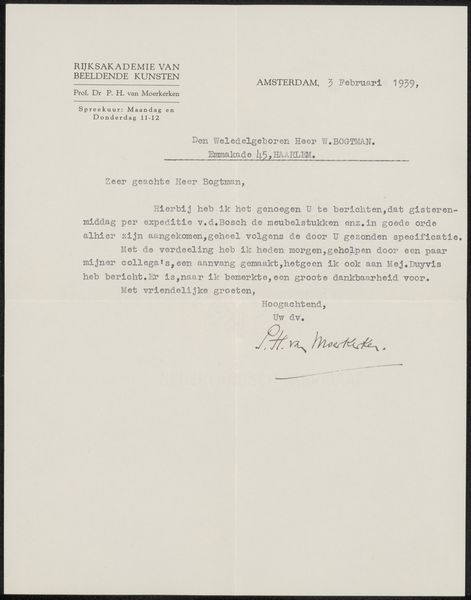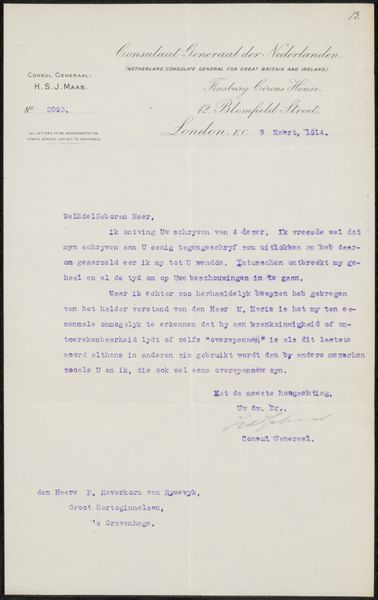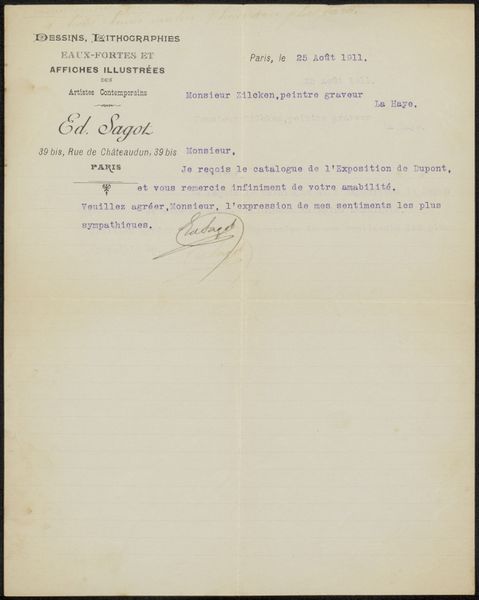
drawing, paper, ink
#
drawing
#
paper
#
ink
Copyright: Rijks Museum: Open Domain
Curator: Here we have "Brief aan Philip Zilcken," a piece that may have been composed anytime between 1911 and 1918. The work is an ink drawing on paper by Edmond Sagot. At first glance, what leaps out for you? Editor: Well, it's definitely the *aura* of it all. It feels...intimate. A glimpse into a private exchange. The writing itself almost becomes the art, all those carefully formed letters. It’s beautiful in its formality, and a little haunting in its fragility. Curator: Absolutely. Sagot was an art dealer and publisher in Paris, deeply embedded in the artistic circles of his time. His gallery championed many emerging artists. In this letter, he writes to Mr. Zilcken to thank him for writing an article on an exposition for a painter called P. Dupont in "La Gazette de Hollande". Editor: Dupont... that rings a faint bell, but I can't quite place him. More interesting is the social dynamic here. There is some name dropping but there is also that self-deprecating phrase "...modesty that wouldn't allow an exposition..." Sagot writes as if his fellow painter died not too long ago. The old-fashioned pleasantries almost add insult to the other two's artistic modesty. It shows what mattered back then and in many ways what also matters today. Connections, the ability to discuss people, social settings... all in all marketing. Sagot knew a thing or two about it. Curator: Precisely. And look at the handwriting; so much character is conveyed! It's a script that speaks of an era defined by nuanced, handwritten communication, an element largely lost today. Editor: Right! And as an object, it represents something incredibly interesting. It connects the dots. You suddenly have this beautiful network appear. Like an old telephone network of artists. They don't live isolated, they share and live and talk with one another. Sagot's lines almost serve as an inscription into the artistic life, the conversations and critiques that swirled around the canvas and ultimately gave birth to what we now see framed on walls. Curator: Well put. It reminds us that art doesn't emerge in a vacuum. There's so much richness hidden within these delicate strokes of ink. The context of such objects tells stories far beyond the artworks they tried to sell, collect and protect. Editor: True. Perhaps a reminder that even the most polished presentation began with the quiet, connective lines between people.
Comments
No comments
Be the first to comment and join the conversation on the ultimate creative platform.
